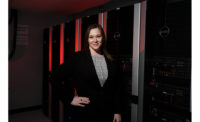The electronic security industry’s national business is subject to regulation by 18,000 local public safety agencies and the government bodies that provide oversight to their activities. It has always been the case that a sound, fair and predictable regulatory climate is essential for businesses to grow and prosper. So, who speaks for the electronic security industry at the local level?
State and local associations play an important role as do local dealers. The Security Industry Alarm Coalition (SIAC) was created to provide support and outreach for these efforts, as well as expertise and proven solutions to issues such as reducing false alarms. SIAC’s expertise and deep connections to leaders in law enforcement has become even more essential as new technologies such as ASAP-to-PSAP, cloud-based systems and evolving video technology are integrated into current and new security systems. (See related article, “The New Gold Standard for Alarm Monitoring,” on page 16.)
By working closely with law enforcement leaders, we are able to develop personal relationships, hear and understand their concerns and bring forward examples of successful programs to address alarm issues. Our strategy has been to get as many “good” ordinances implemented as we can; success breeds success.
SIAC has a continuing year-round program to network and interact with these leaders in law enforcement to position SIAC as a trusted resource for dealing with alarm issues. This includes the establishment of state-wide alarm management committees with State Associations of Chiefs of Police, meetings with more than 170 law enforcement agencies and participation in major public safety organizations.
Interacting with law enforcement leaders on a personal level builds trust, as well as name recognition. We are not only working with current leaders, but also those who will be assuming leadership positions over the next decade.
SIAC experts are available at every step of the process for a community developing or improving their alarm management practices. SIAC’s model ordinance, developed in cooperation with leading law enforcement organizations, provides a template that can be easily adapted to local preferences. SIAC representatives are available to meet with elected officials and all services are provided at no cost to the community.
Because alarm issues tend to come up sporadically and without warning, SIAC carefully monitors the media as well as its many law enforcement contacts and state alarm associations so that it can proactively approach agencies with solutions to alarm issues. The alternatives are ordinances created by individuals with little or no expertise in electronic security. We have seen elected officials lobbied by individuals with political or personal agendas based on misinformation or resentment of our industry’s success.
As new technology generates new regulatory issues it is more important that the industry leverage the good will and expertise SIAC has built over the years for the benefit of the industry and customers whose lives and property it helps protect.


